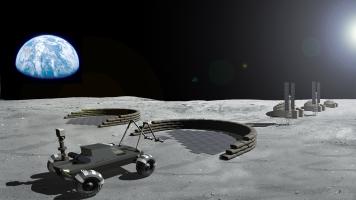Duration: 12 months
The global community has set its sights on furthering human presence on the Moon. The International Space Exploration Coordination Group (ISECG) revised its Global Exploration Roadmap in 2022 with a supplement to align a consensus-driven international lunar exploration scenario. The roadmap aims at enhancing cooperative opportunities amongst ISECG agencies, to ensure a sustainable return to the Moon by establishing the required infrastructure for lunar habitats, while generating socio-economic benefits on Earth. A crucial prerequisite to such infrastructure is the creation of berms, shelters and other protection means for landing pads as well as equipment and machines that will be initially deployed.
This activity studies an innovative Lunar Robotic Construction System (LRCS) that can safely and efficiently utilize the simplest and most readily available materials on the Moon, namely, the raw lunar regolith, for building simple structures, without any further processing such as melting or sintering.
The core of the innovation is the Regolith Containment Units (RCUs), analogous to terrestrial sandbags, which the LRCS fills and manipulates, as general construction blocks to form protective structures for the landing pads and equipment and machines on the Moon. The study is conducted through a collaboration between the University of Toronto Institute for Aerospace Studies (UTIAS), Canada, and Algoryx Simulation AB, Sweden, whose software AGX Dynamics will be the primary means of study, as well as MDA Space Ltd, Canada, specialized in space robotics.

